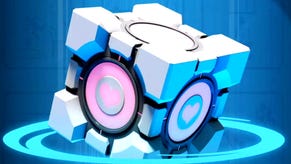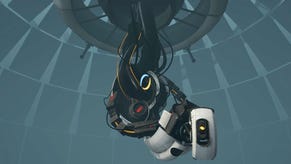Portal 2
Turrets syndrome.
Everyone's smart at Valve. The designers are smart, the art teams are smart, and the lady behind the reception desk can answer the phone in Latin or Aramaic if she has to - trust me, I've made her do it. Most of all, though, the games are smart, and the smartest of them all is Portal: chic, goofy, devious, practical Portal.
Portal was so smart, in fact, that it packed a lifetime of ideas into the space of about three or four hours, and even found the room to thread in a suggestive little story and a killer song. Did it need a sequel? Not really. Is the sequel looking any good? Absolutely.
Valve's pretty open about the fact that a second game wasn't part of the original plan, but hits happen. Apparently, the developer was simply taken aback by the depths of the audience's attachment to that first outing, with its cake and its lies, its companion cubes and its vapourware parties. That left everybody with something of a problem, though, as Portal itself was essentially a Half-Life universe shaggy dog tale hinging on some clever surprises. How do you follow that up? No pressure.
Luckily, Valve is good with, um, pressure, and the sequel is looking as confidently crafted as you might expect. Portal 2 seems every bit as devilish, mind-warping and charming as the first game. Astonishingly, it also looks as surprising, too.
In terms of narrative, we're still at the hinting stage. What is clear is that a long time has passed since the events of the original Portal, and the test suites at Aperture Science have fallen even further into disrepair. The roof has given in to creepers and hanging foliage, those famous pristine tiles are loose or riddled with cracks, and gantries swing from their mountings, with cables sparking brightly in the facility's dimmer recesses.
Chell's back - after a smart bit of retrofitting to the original game's ending - and so is GLaDOS, the murderous sing-song AI, whose name is astonishingly annoying to type. The two appear to be thrown into an extremely uneasy alliance in order to rebuild the test rooms, and they're joined by Wheatley, a chirpy and pleasantly oblivious personality core with a charming English accent, too.
In terms of the actual game mechanics, Valve's solution to sequels is brilliantly simple: dream up a careful selection of new stuff, and see how things spark when you make it all collide.
This is a game of tools and gimmicks, a game where the player's imagination is what makes things come together as they experiment with the crazy technology on offer, so rather than play through a handful of levels and risk spoiling the fun for later, the developer's E3 demonstration is simply a roll call of some the new bits and pieces you'll get to screw around with, and the merest of hints as to the possibilities they'll offer when things converge.
First up is the Excursion Funnel. These are little blue-spiralled tractor beams you can set in motion by laying down portals. Perfect for getting across long gaps or out of deep wells, they can also be used to move items, like the famous companion cubes, from point A to point B.
If you haven't got the patience for the stately pace of the Funnels, you might prefer the Aerial Faith Plates: businesslike - if extremely violent - spring boards which will bounce you from one area to the next. When Valve's designers string them together, you can follow a bounding crate halfway across a map without ever having to actually walk, and if you nail the timing, you can set up portals at just the right moment to ensure you won't be brought up short by any pesky walls, too.








